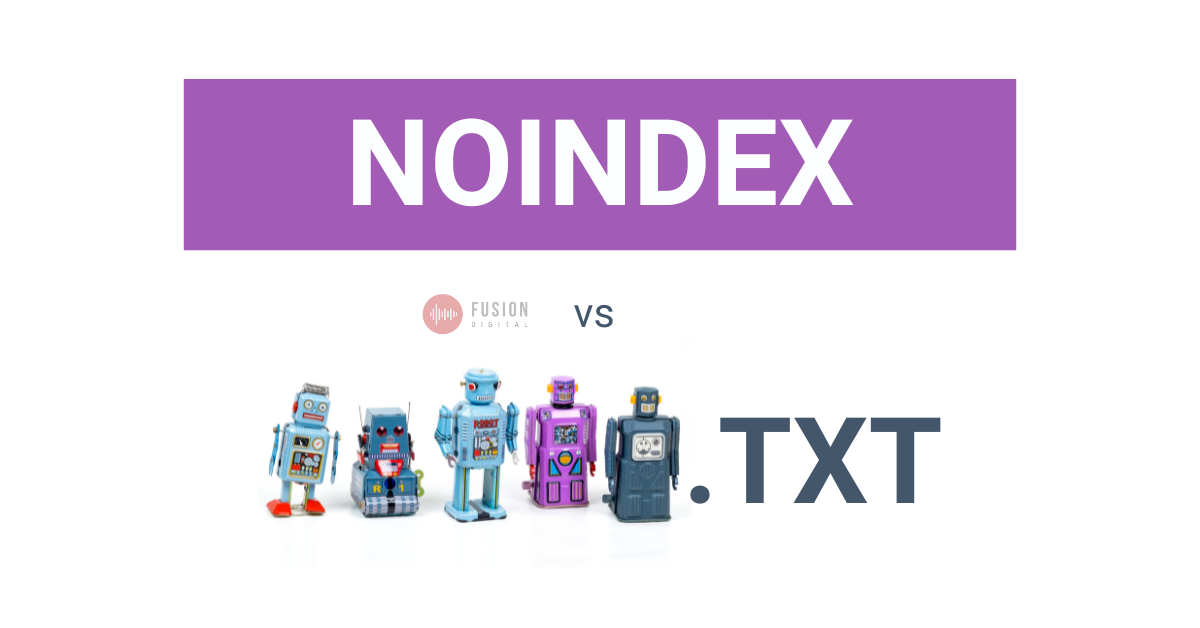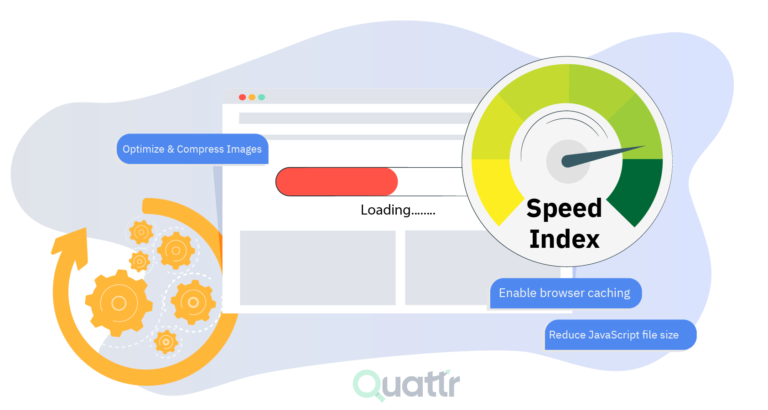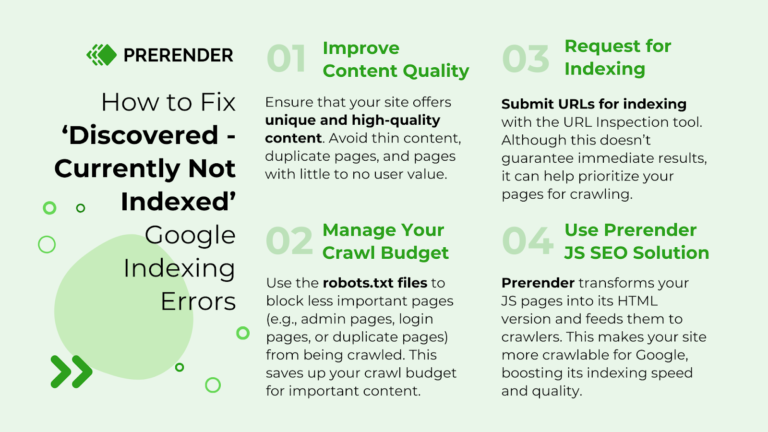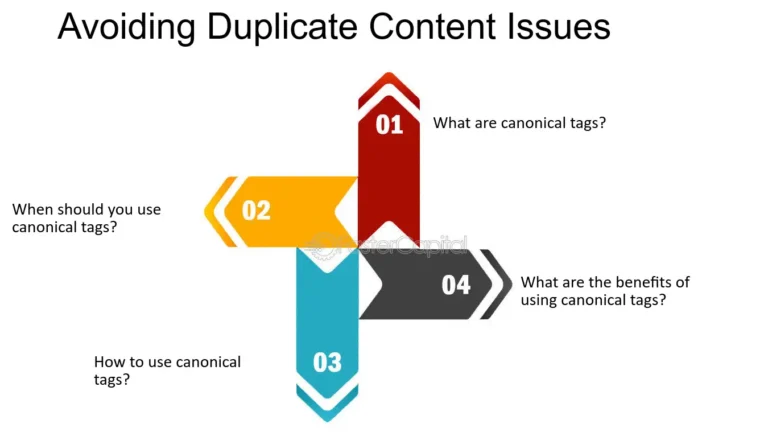Noindex is a meta tag that tells search engines not to index a specific webpage. Use it when you want to keep certain pages from appearing in search results.
Noindex helps control your website’s visibility in search engines. It’s crucial for pages that aren’t valuable to your audience, like duplicate content or internal thank-you pages. By applying the noindex tag, you prevent search engines from indexing these pages, which can enhance your site’s SEO performance.
This approach ensures that only relevant and high-quality content is searchable, improving user experience. Use noindex strategically to maintain a clean and efficient site structure, guiding search engines to focus on your best content. Understanding when to implement this tag can significantly impact your online presence.

Credit: www.seroundtable.com
The Essence Of Noindex In Seo
The Noindex tag plays a vital role in SEO. It helps control what appears in search engine results. Using Noindex wisely can improve your website’s performance. This tag tells search engines not to display certain pages. It helps manage duplicate content and keeps your site focused.
Breaking Down The Noindex Tag
The Noindex tag is a simple yet powerful tool. Here’s how it works:
- HTML Tag: It is placed in the
section of a webpage. - Syntax: The correct syntax is
. - Purpose: It prevents search engines from indexing the page.
Here are some common situations for using the Noindex tag:
- Duplicate content pages.
- Thank-you pages after form submissions.
- Low-quality or thin content.
- Internal search results pages.
How Noindex Affects Search Engine Crawling
Noindex directly impacts how search engines crawl your website. Here are some key effects:
| Effect | Description |
|---|---|
| Reduces Crawl Budget | Search engines spend less time on unimportant pages. |
| Focus on Quality Content | Encourages indexing of valuable pages. |
| Improves User Experience | Users find relevant content more easily. |
Using Noindex helps maintain your site’s integrity. It allows you to guide search engines effectively. Make thoughtful decisions on which pages to noindex. This enhances your site’s overall SEO strategy.

Credit: dagmarmarketing.com
Comparing Noindex, Nofollow, And Disallow
Understanding the differences between Noindex, Nofollow, and Disallow is crucial for website management. Each serves a specific purpose in controlling how search engines interact with your content. Let’s explore these terms clearly.
Contrasting Noindex With Nofollow
Noindex and Nofollow are both directives used in SEO. They tell search engines what to do with web pages. Here’s a breakdown:
| Directive | Function | Use Case |
|---|---|---|
| Noindex | Prevents a page from appearing in search results. | Use on low-quality pages or duplicates. |
| Nofollow | Tells search engines not to follow links on a page. | Use on untrusted links or paid links. |
In simple terms, Noindex keeps the page out of search results. Nofollow stops link passing value.
Dissecting The Disallow Directive In Robots.txt
The Disallow directive is part of the robots.txt file. It tells search engines which pages or sections to avoid. Here’s how it works:
- Purpose: Prevents crawlers from accessing specific content.
- Syntax: You write it in
robots.txtlike this:
User-agent:
Disallow: /private-directory/
This example blocks all crawlers from the /private-directory/ path. Use it to protect sensitive areas of your site.
Remember, Disallow does not remove pages from search results. It simply stops crawling.
Strategic Implementation Of Noindex
The Noindex tag plays a vital role in SEO strategy. It tells search engines to exclude certain pages from their index. This is useful for controlling what content appears in search results. Using Noindex strategically can enhance your website’s performance.
Ideal Scenarios For Using Noindex
Using the Noindex tag is beneficial in several situations. Here are some ideal scenarios:
- Duplicate Content: Pages with similar content can dilute SEO efforts.
- Low-Quality Pages: Thin content or outdated pages may harm your rankings.
- Admin or Login Pages: These pages don’t provide value to users.
- Staging or Development Sites: Prevent indexing of non-public content.
Common Misuses Of Noindex
Using Noindex incorrectly can lead to problems. Here are common misuses:
| Scenario | Impact |
|---|---|
| Using on Important Pages | Loss of traffic and visibility. |
| Overusing on Multiple Pages | Potential for index issues. |
| Confusing with NoFollow | Misunderstanding of link and content management. |
Be cautious. Misuse can harm SEO strategy.
Technical Insights: How To Implement Noindex
Understanding how to implement Noindex helps control your site’s visibility. Two common methods exist: using meta tags and HTTP headers. Both methods serve specific purposes. Here’s how to use them effectively.
Using Meta Tags To Apply Noindex
Meta tags are simple to use. They offer a quick way to tell search engines to skip a page. Here’s how to add a Noindex meta tag:
Place this tag in the section of your HTML. Here’s a step-by-step guide:
- Open your HTML file.
- Locate the section.
- Add the meta tag as shown above.
- Save your changes.
Ensure to apply it to pages you want to hide. This method is ideal for:
- Duplicate content
- Low-quality pages
- Thank you or confirmation pages
Noindex Via Http Headers
Using HTTP headers is another effective method. This approach is beneficial for dynamic content. Here’s how to send a Noindex header:
Header set X-Robots-Tag "noindex"Follow these steps:
- Access your server settings.
- Locate your .htaccess file.
- Add the header line as shown.
- Save and close the file.
Use this method for:
- Entire directories
- Files that require specific handling
- Content types like PDFs
Both methods effectively control your site’s crawling. Choose the one that fits your needs best.
Noindex Impact On Website’s Seo Performance
The noindex tag is a powerful tool for SEO. It tells search engines to ignore certain pages. This can have significant effects on your website’s visibility. Understanding these impacts helps in making informed decisions.
Using the noindex tag can streamline your site. It can prevent low-quality pages from ranking. This focuses your SEO efforts on high-value content.
Short-term Vs Long-term Seo Effects
Implementing a noindex tag has both short-term and long-term effects. Here’s a quick breakdown:
| Effect | Short-term | Long-term |
|---|---|---|
| Traffic | May drop initially. | Can stabilize as quality improves. |
| Page Authority | Can decline quickly. | May grow as you focus on valuable pages. |
| SEO Rankings | Potential temporary decline. | Improved rankings for prioritized content. |
Short-term effects can be alarming. Some pages lose traffic suddenly. This happens as search engines remove them from their index. But the long-term benefits outweigh these concerns.
Focusing on quality pages boosts overall site authority. This can lead to better rankings over time.
Case Studies: Noindex In Action
Many websites have successfully used the noindex tag. Here are a few examples:
- eCommerce Site: A retailer added noindex to low-performing product pages. They saw an increase in traffic to higher-quality listings.
- Blog: A content-heavy blog used noindex for outdated posts. This led to better ranking for fresh, relevant articles.
- Corporate Website: A company removed noindex from their homepage. This boosted their visibility and improved site authority.
These cases show how strategically using noindex can enhance SEO. It helps in focusing on what truly matters.
Navigating Noindex With Google Search Console
Using the Noindex tag is important for website management. It helps control which pages appear in search results. Google Search Console is a powerful tool for monitoring these pages. Understanding how to navigate Noindex in this tool is essential for better SEO.
Monitoring Noindex Pages In Google Search Console
Google Search Console offers a way to track Noindex pages. Follow these steps to monitor them:
- Log in to your Google Search Console account.
- Select your website property.
- Go to the Coverage section.
- Look for the Excluded pages tab.
You can see which pages are excluded from indexing. Look for the Noindex reason in the list. This helps you check if your Noindex tags work correctly.
| Reason for Exclusion | Description |
|---|---|
| Noindex Tag | Page has a Noindex directive. |
| Blocked by Robots.txt | Page is blocked from crawling. |
| Duplicate Content | Page is a copy of another page. |
Addressing Indexation Issues With Noindex Tags
Sometimes, Noindex tags cause issues with indexing. Here’s how to fix them:
- Check if the Noindex tag is necessary.
- Review your content strategy.
- Ensure the tag is properly implemented.
Use the URL Inspection Tool in Google Search Console. This tool shows the current index status of your pages. Fix any issues with your Noindex tags.
Regularly check your Noindex pages. This keeps your website optimized for search engines. Focus on pages that provide value to users.
Alternatives To Noindex For Content Control
When managing website content, using a Noindex tag is common. However, other methods exist for controlling content visibility. Here are two effective alternatives:
Canonical Tags For Duplicate Content Management
Canonical tags help manage duplicate content. They tell search engines which version of a page to index. This is useful for:
- Preventing duplicate content issues.
- Consolidating link equity.
- Improving search rankings.
To implement a canonical tag, use the following code in the section:
Place this tag on all duplicate pages. This ensures search engines recognize the primary page.
Content Removal Requests For Immediate Action
Content removal requests are a quick way to control visibility. Use this method for:
- Removing outdated or harmful content.
- Addressing copyright issues.
- Fixing errors in published content.
To submit a removal request, follow these steps:
- Go to Google Search Console.
- Navigate to the “Removals” tool.
- Enter the URL you want to remove.
- Choose the reason for removal.
- Submit the request.
This method provides immediate results. Use it wisely to maintain your site’s quality.
Expert Advice: Best Practices For Noindex
Using the Noindex tag can shape your website’s SEO. Proper use can enhance your site’s performance. Here are essential practices to consider.
Balancing Noindex With Overall Seo Strategy
Finding the right balance is crucial. Noindex should fit well with your overall SEO goals.
- Identify pages that offer limited value.
- Use Noindex on duplicate content.
- Exclude low-quality pages from search results.
Track the performance of Noindexed pages. Analyze how they affect your overall traffic. Adjust your strategy based on real data.
| Page Type | Noindex Recommendation |
|---|---|
| Duplicate Pages | Yes |
| Landing Pages | No |
| Thank You Pages | Yes |
| Old Blog Posts | Consider |
Future-proofing Your Noindex Approach
Prepare for changes in SEO trends. Regularly review your Noindex strategy.
- Set reminders to audit your Noindex usage.
- Stay updated on SEO best practices.
- Adjust your Noindex tags as needed.
Consider the potential impact of future updates. Search engines evolve. Your strategy should adapt to these changes.
Maintain a clear documentation of all Noindex tags. This helps in tracking and managing your SEO efforts effectively.

Credit: www.wix.com
Frequently Asked Questions
What Does Noindex Mean In Seo?
Noindex is an HTML tag that instructs search engines not to index a specific page. This means the page won’t appear in search results. It’s useful for duplicate content, low-value pages, or when you want to prevent indexing during development.
When Should I Use Noindex?
You should use Noindex for pages that provide minimal SEO value. Examples include thank-you pages, login pages, and duplicate content. Implementing Noindex helps maintain a clean site structure and ensures search engines focus on more valuable content.
Can Noindex Affect My Website’s Ranking?
Noindex does not directly affect overall website ranking. It simply prevents specific pages from appearing in search results. However, it can improve the overall SEO health of your site by directing search engines to more relevant content.
Is Noindex The Same As Disallow?
Noindex and Disallow serve different purposes. Noindex tells search engines not to index a page, while Disallow instructs them not to crawl it at all. You might use both in combination for optimal control over your site’s visibility.
Conclusion
Understanding how to use the noindex tag is essential for effective website management. It helps control search engine visibility and improves user experience. Use it wisely on pages that don’t add value to your site’s SEO. This strategic approach can enhance your overall online presence and drive targeted traffic to your key content.







